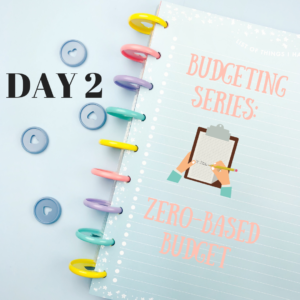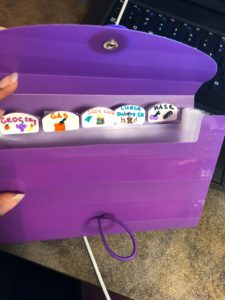Hello, beautiful people from across the lands! Yesterday we talked about the importance of knowing your numbers and the basics of starting a budget. Today I would like to share the types of budget I utilize which is the zero-based. With a zero-based budget you give every single dollar an assignment not leaving any money to roam free and make its own plans.

Because you took action yesterday listing all your expenses and income, today’s step should be easy. Now depending on the outcome of your budget, you should know if there is a little money left over that should be told what to do. For example, if after listing your budget you have $150 left over it can go into savings, side cash, fun money or what you can use to pay a little extra on debt. To help me assign every dollar I use a system called cash envelopes.
Cash Envelopes
Cash envelopes is a concept I came across listening to Dave Ramsey. Having cash creates a tangible experience when spending money. You become more aware of your spending as you physically have to pay for things making sure you have the right amount in hand versus just handing over your card and crossing your fingers hoping it goes through. I like to create cash envelopes for my non-bill spending. So things like gas, grocery, side cash, and others. These are all common expenses in my household.
I found this at Dollar Tree and use this for my cash envelop stashing.

Your cash envelopes may vary and that’s OK. Once the money is gone from the envelope THAT’S IT! If your lunch money/ out to eat envelope has no more cash it’s time to start packing your lunch. The point of this method is to help discipline yourself not to spend beyond your means. It also helps you refine your budget if need be. You may have not budgeting enough in for gas and realize you can pack your lunch more taking from that envelope and applying it to your gas. This is how you cure the “where did my money go” syndrome.
Recap
Using the zero-based budget method gives EVERY dollar an assignment
Cash envelopes help you budget non-bill money that is left over. This allows you to become more financially discipline. Remember once that envelope is empty THAT’s IT no more excessive spending!
TAKE ACTION
Day 1 we created our budget now today create your cash envelopes to allocate for your non-bill money that is left over. Doing this step will you prioritize what you actually need to spend and what may have to take a back seat. Happy budgeting! Until next time dream, believe and achieve.




